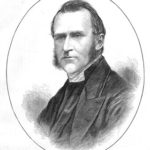by Roger Olson
Okay, so I used that title to get your attention. No, I don’t really think we need an Arminian Defense League (although sometimes I feel like the only person doing anything to defend Arminianism from its enemies and could use some help!).
Earlier, here, I talked about a video on Youtube.com (it might also exist on DVD or something, but I’ve only seen it on Youtube.com) that viciously attacks Arminianism. It’s a slick video — well produced (not a home-made talking head video like so many). I understand it is part of a longer series on Reformed theology.
To view it, just go to www.youtube.com and enter “Arminianism.” It’s usually the first thing that comes up. It’s called “Arminianism: The Root of ‘Christian’ Liberalism?” It’s filled with unsupported innuendos about the seemingly (to them) inescapable results of Arminianism. The producers strongly imply that Arminianism leads to denial of the deity of Jesus Christ. That’s something I want to address here now. Later I’ll take on some other claims of the video.
So, near the beginning of this clip, the narrator talks about Jacob Arminius, the Remonstrants (his followers after his death in 1609) and the Synod of Dort (1618/1619). The narrator (reading from a script) says something about how the Reformed delegates to Dort loved their Arminian brothers and hated to judge them, but it had to be done (to protect orthodoxy). In fact, anyone who reads an objective historical account of Dort knows that many of the leaders of that synod (really a kangaroo court) hated the Remonstrants passionately. Their vituperation against them was personal. They forced them to sit at a table in the middle of their meeting while they berated them. Sometimes some of them were in chains — not because they were a danger but because the real power behind the synod, Prince Maurice of Nassau (the Stadthalter of Holland, the most powerful of the United Provinces) viewed them as enemies of the state (which they were not).
Before I continue, let me cite my immediate source for what I say above and below. It is Socinians and Arminians: Antitrinitarians, Calvinists and Cultural Exchange in Seventeenth-Century Europe, edited by Martin Muslow and Jan Rohls (Brill, 2005). This is a volume of scholarly historical essays, not theology per se, but it deals with the theological views as well as the political beliefs and motives of all parties in these early 17th centuries debates mostly in the Netherlands (then called the United Provinces).
One of the great historical ironies is that the Remonstrants were accused of wanting the civil authorities (magistrates) to rule the church (the Reformed Church of the United Provinces), but their enemies were the ones who actually relied on the state (Prince Maurice) to enable their synod and enforce its decisions (which included the exile of all Arminians who refused to be silent about their beliefs). Some of the leading Remonstrants were thrown into prison (including Hugo Grotius, a leading European jurist and statesman). Johan van Oldenbarnevelt was beheaded.
Somehow or other, some of the leading Reformed divines (pastors, theologians) convinced Prince Maurice that the Arminians/Remonstrants were a threat to the independence of Holland and the United Provinces generally because, allegedly, they were in cahoots with the Jesuits of Spain. Spain had dominated the “Low Lands” (what are now the Netherlands and Belgium) for decades and the United Provinces (now the Netherlands) had just recently thrown them out and become independent. There is, of course, absolutely no evidence of any collaboration between Spain and the Jesuits, on the one hand, and the Arminians/Remonstrants , on the other hand. These were trumped up, false charges, but they swayed the Prince against the Remonstrants. (When Prince Maurice died in 1625 his brother succeeded him and allowed the Remonstrants to return to the United Provinces.)
The particular claim made in the video clip that I want to challenge as tantamount to a lie is where the narrator (again, reading from a script written by someone whose identity I don’t know) strongly suggests that Remonstrant leader Conrad Vorstius denied the deity of Christ and the Trinity (i.e, was a Socinian). I think he uses the word “almost” so that what he says isn’t a bald faced, total lie that can easily be shot down. But what does that even mean? The impression given by the video is that Vorstius (and perhaps other Remonstrants) were secret Socinians or in league with the anti-Trinitarian Socinians (17th century Unitarians).
The volume I cited above clears things up beautifully. Apparently Vorstius (not the leader of the Remonstrants but a leading Remonstrant thinker who was recommended to succeed Arminius as professor of theology at Leiden) was not particularly astute with some of his statements. He admitted to “learning from” the Socinians and that was enough to get him condemned as a heretic by the Reformed party leaders. However, he never denied the deity of Christ or the Trinity. What he “learned” from the Socinians related to their arguments against high Calvinism. Nevertheless, he was accused, wrongly, of being anti-Trinitarian and denying the deity of Christ. (This was a false charge brought up against Arminius, as well, but before he died he cleared it up decisively.) And he publicly defended those doctrines.
For the makers of this video to drag out this old canard against Vorstius and use it to imply that Arminianism inclines towards denial of Christ’s deity and the Trinity is simply nothing other than vicious calumny. They should be ashamed of themselves and fair-minded evangelicals of all flavors (including Calvinists!) should shame them for it. They admit that not all Arminians went on to deny the deity of Christ or the Trinity (or, for that matter, the inerrancy of the Bible), but the implication is left that Arminianism leads in that direction. Why else bring it up?
I am publicly calling out the author of the script of this video clip and its producers and asking them to take it down. I’ll talk about other reasons in later posts here. Stand by….





